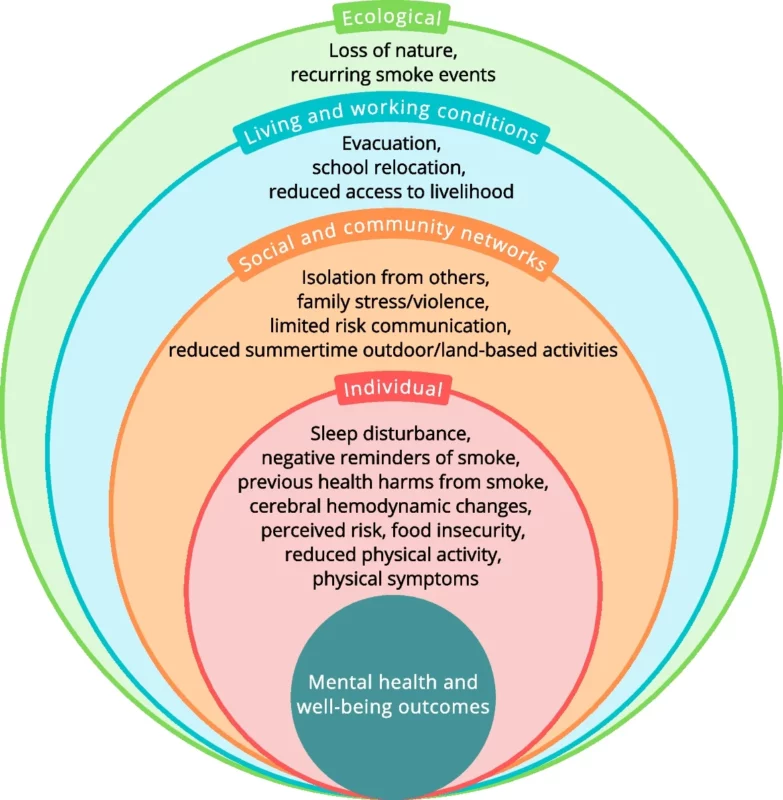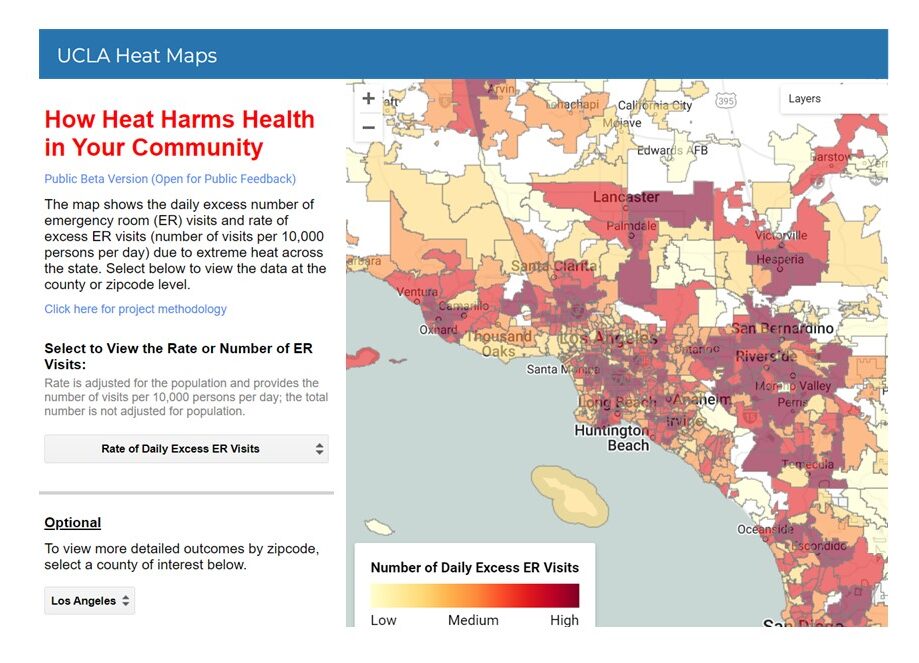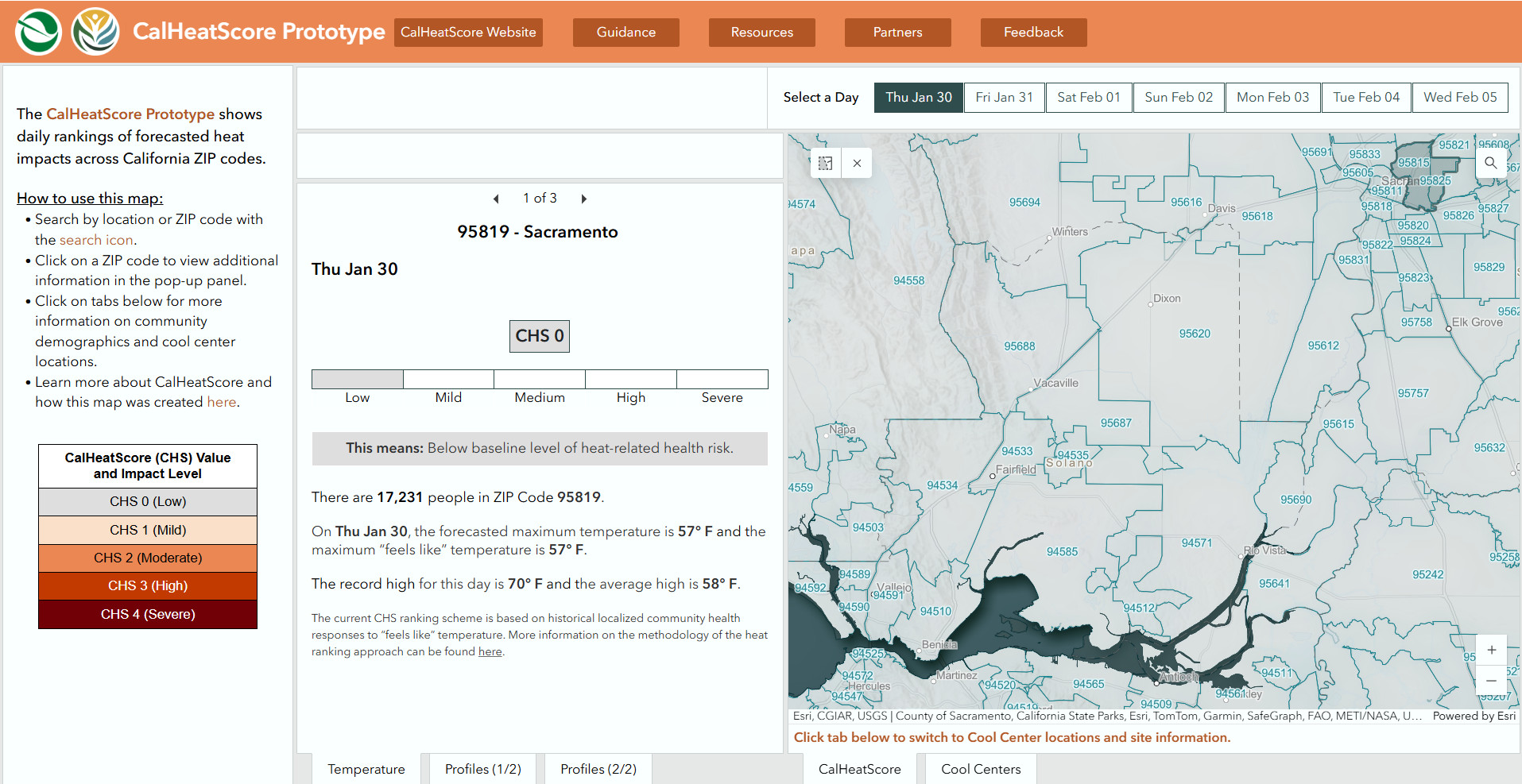Understanding health impacts
Heat illness
UCLA Heat Map
Every summer, heat waves send thousands of Californians to the hospital for heat-related health problems We applied state-wide hospitalization data to spatial climate exposures and quantified excess emergency room visit rates during extreme heat days at the zip code level. local planners and organizations are using this map to prioritize their programs.
Explore the tool to find out how many excess ER visits occur in your area during a heat wave.
CalHeatScore
C-Solutions produced the underlying analyses that supports CalHeatScore, the nation’s first state-wide heat warning system that is driven by actual population health data and detailed climate modelling. We collaborated with top experts—Dr. John Molitor of Oregon State University, a specialist in small area estimate modeling, and Dr. Larry Kalkstein’s renowned team at Applied Climatologists—to characterize heat severity and find associations with health outcomes in every region of our large and diverse state. Building on our pioneering work on the Heat Map, C-Solutions is advancing innovative strategies to protect communities from the growing threat of extreme heat.
Click the button below to visit the OEHHA website and explore CalHeatScore.
Cardiovascular and metabolic disease

Our spatial exposure models of vehicle and industrial pollutants such as NO2 and ozone have enabled a depth of health research on metabolic disease in the population from ambient, everyday exposures. These have identified mechanisms that increase risk for hypertension, diabetes, and dementia in large scale studies across Canada and the US. Our work on vulnerable populations has identified increased risk of diabetes and hypertension among African American women from ambient ozone and NO2 exposures, and findings that air pollution interacts with noise exposure to increase risk for diabetes, dementia and cognitive impairment in a cohort of older Mexican Americans.
Birth outcomes
Although many studies have linked prenatal exposure to PM2.5 with adverse birth outcomes, little is known about the effects of specific constituents of PM2.5. For singleton births in Los Angeles County (2017-2019) we estimated exposures from PM2.5 species, including barium and zinc from brake and tire wear particles, black carbon, and reactive oxygen species. These metals from brake and tire wear and particle components that contribute to oxidative potential were associated with an increased risk of pre-term birth and term low birth weight, particularly among Hispanic, Black, and mixed-race or Native American women. This indicates that focusing on total, mass-only PM2.5 reductions may not be sufficient to protect the most vulnerable pregnant women and children from adverse effects of traffic pollutants.

Asthma and respiratory illness
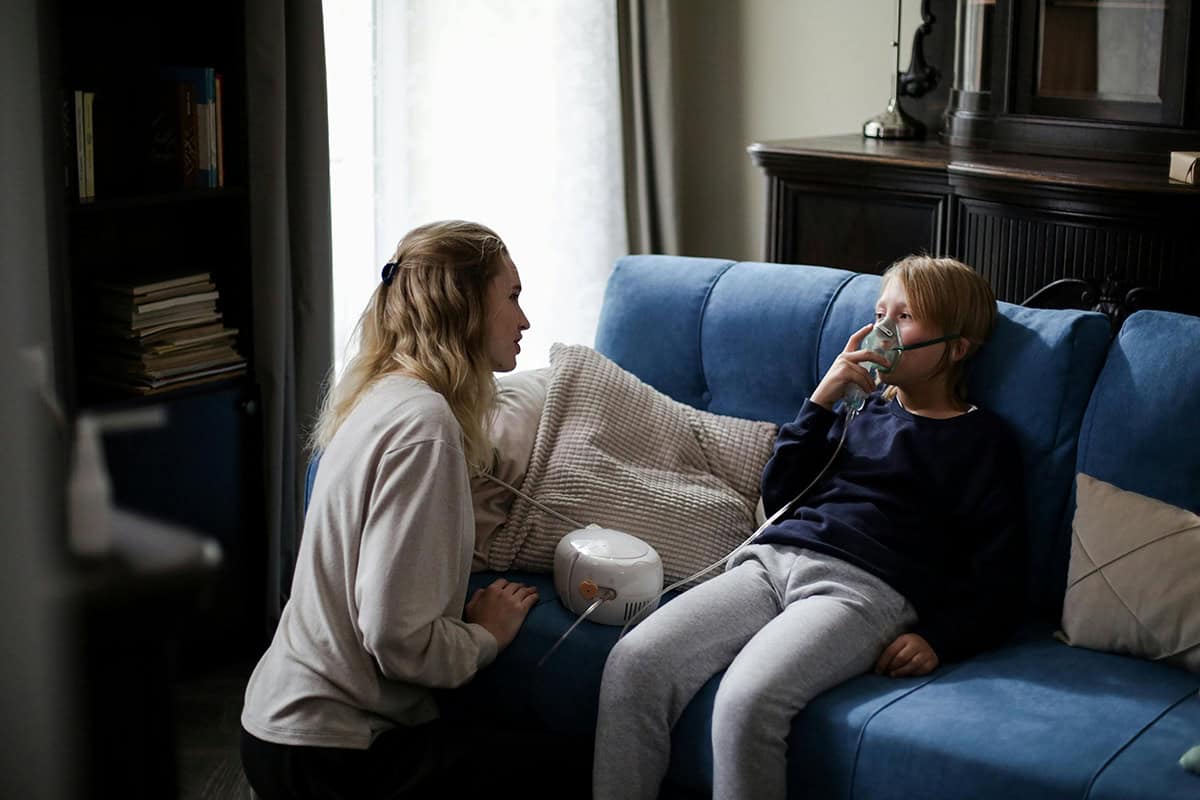
It is important to understand and track potential improvements to community health that accrue as a direct result of emission reductions programs, but, at present, no systematic tracking system exists. For areas designated as pollution burdened, we are developing a way to track the health impacts of air pollution and identify policies and actions that reduce exposures in impacted communities. With the resulting tool, we will be able to assess the health benefits of selected interventions that aim to reduce air pollution in impacted communities. The final product will include a mapping tool that will display the resulting information on an easily accessible web-based public dashboard.
Mental health
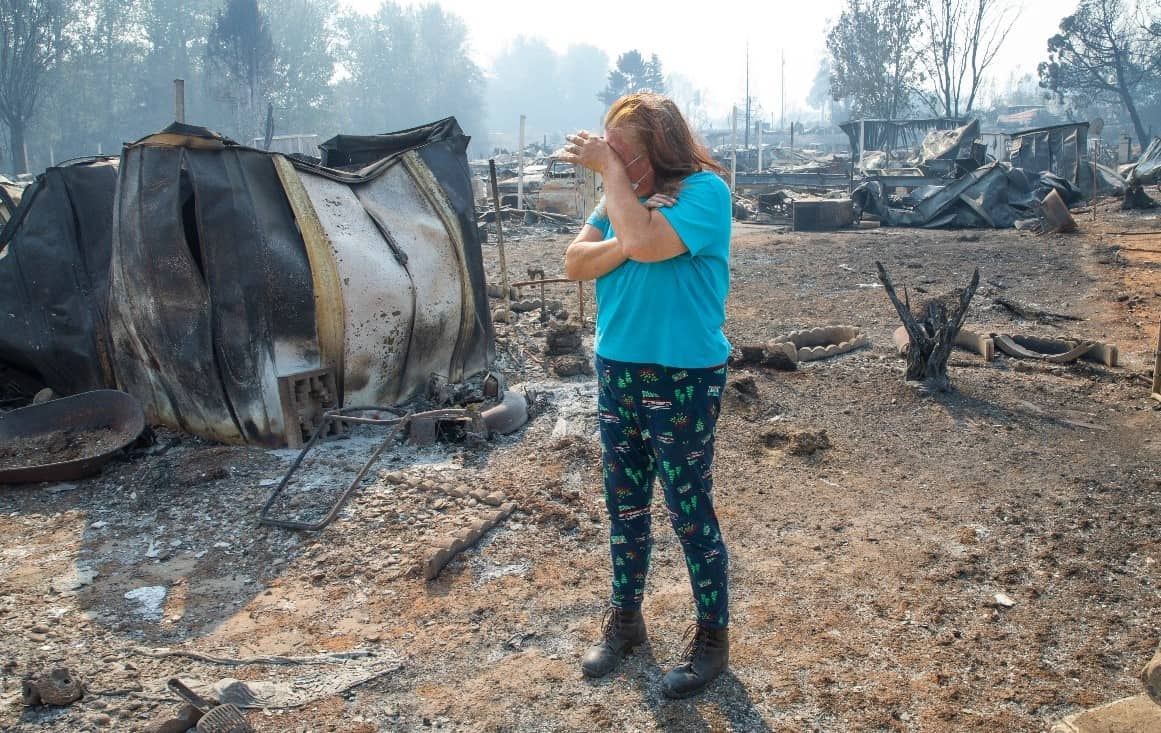
C-Solutions explored the impact of wildfire smoke on mental health and well-being. In a systematic review of literature from 1990 to 2022, we found indications of adverse impacts, particularly during prolonged and recurrent smoke events. We developed a pathways model illustrating how wildfire smoke can affect mental health through various interacting levels, including individual, social, and community factors.
As disasters such as wildfires increase, older adults (60+) are particularly susceptible to the health effects of wildfire smoke exposure. By applying sophisticated outdoor and indoor air modeling to estimate older adults’ exposure, and epigenetic assessments to quantify the biological changes related to such exposures, this C-Solutions collaboration with NYU will contribute to a greater understanding of the dose-response relationship between wildfires and functional physical and cognitive health among older adults.
